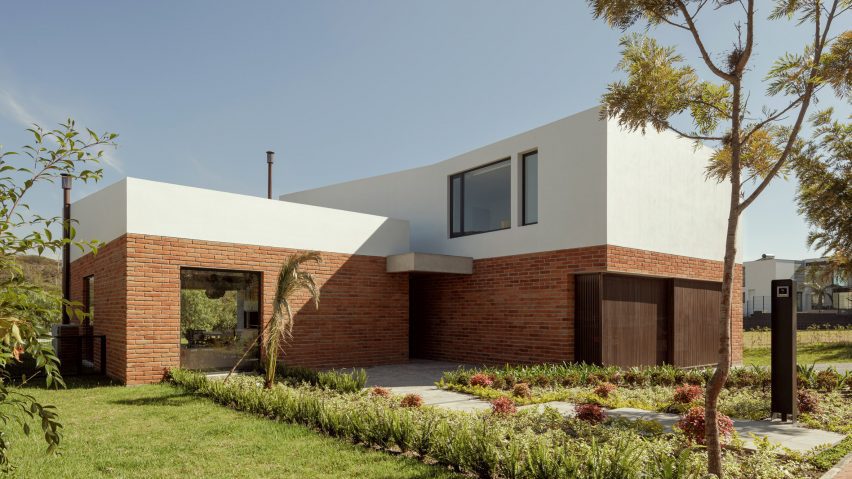
Brick and stucco meet for "harmonious flow" of Quito house
US studio PJCArchitecture has collaborated with local studio Juan Pablo Ribadeneira Mora Arquitecto on a two-toned house with a brick base in Quito, Ecuador.
The 450-square meter (4844-square foot) Cumbaya House was completed in 2023 on a sloping 1,000-square metre (10,800-square foot) lot for a family with a penchant for entertaining.
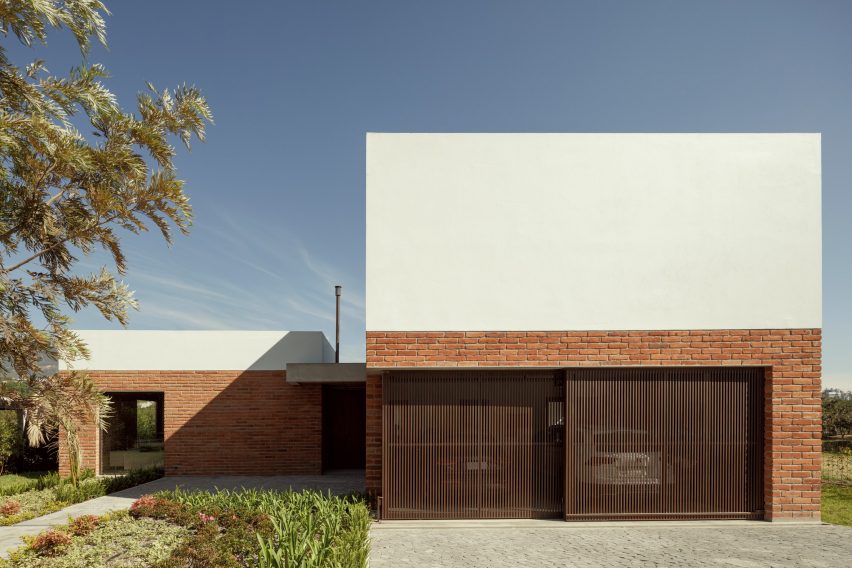
New York City-based PJCArchitecture employed its design-build division in Ecuador, known as Make Estudio Division and architect Juan Pablo Ribadeneira Mora to create a "fluid, harmonious flow throughout their home that facilitates social interaction and outdoor relaxation".
Informed by Ecuadorian vernacular architecture, the boxy home is oriented to the west with two rectangular forms that face the mountains in the distance. The smaller southern form was rotated slightly off-axis to create an angled foyer.
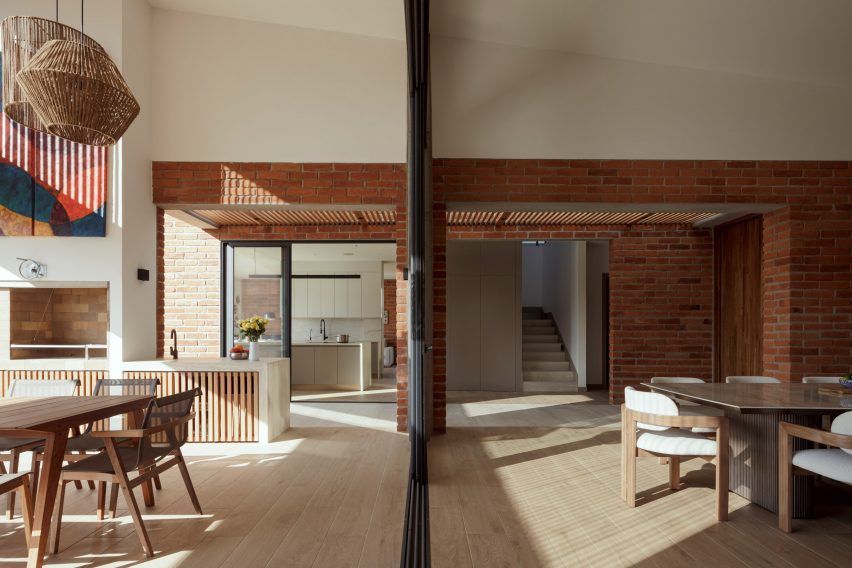
"Nestled in Quito's picturesque valley, the home embraces its natural surroundings and dissolves boundaries between indoors and out," PJCArchitecture associate Nandar Godoy-Dinneen told Dezeen.
Working from an underlying metal structure, the ground level is wrapped in red brick that serves as a thermal mass, while the upper level is smooth, white stucco that reflects and mediates thermal gain.
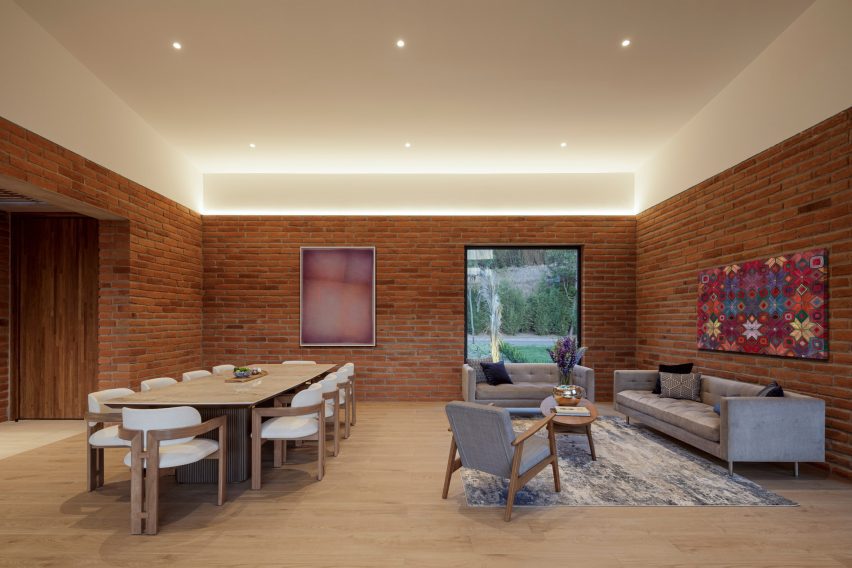
Floor-to-ceiling glazing and sliding glass doors appear at focal points of the home, activating the corners of the walls and bringing light into the interiors.
"In addition to the passive solar design strategy, the design team incorporated a tall vertical wooden screen on the exterior porch that serves a dual purpose – simultaneously shielding the interiors from excess sun while preserving natural light," Godoy-Dinneen said.
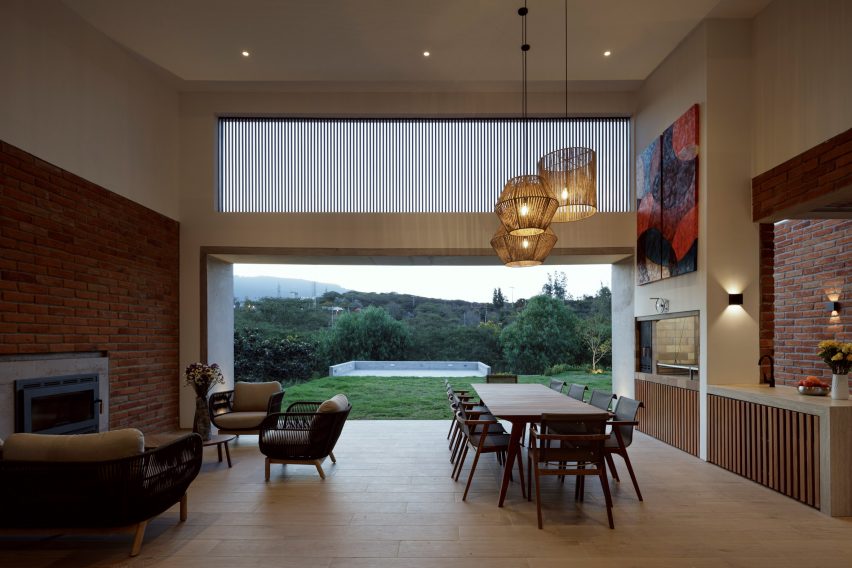
Upon entering the house through a travertine and wooden beam entry, a double-height living and dining room are to the left, looking out to an elevated exterior porch with a custom fireplace and barbecue area.
The northern half of the house includes a two-car garage, storage and service space, which are buffered from the kitchen and family room by a bedroom suite and staircase.
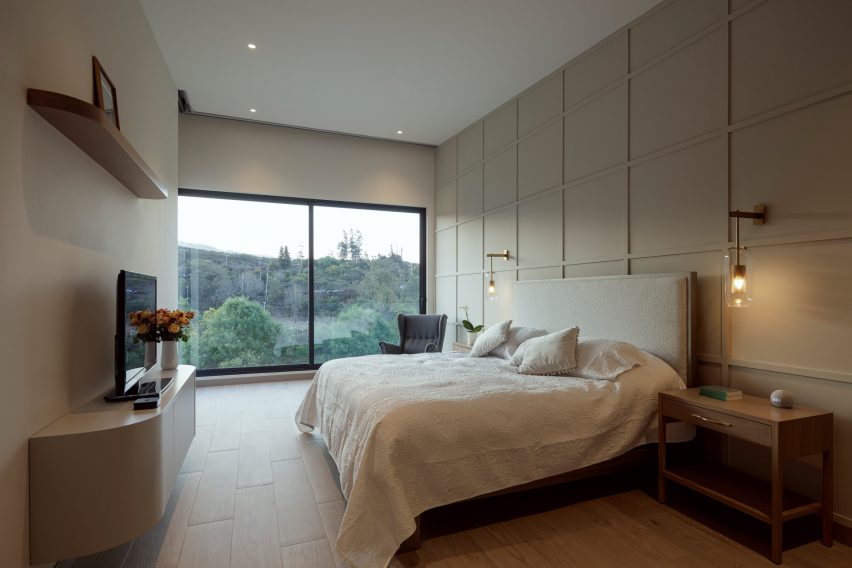
"One of the primary focal points is the fluid transition from the indoor living area through to the exterior porch and into the outdoor vista beyond," Godoy-Dinneen said. "Each transitional moment is elegantly framed by the home's structure."
The kitchen is clad in warm wooden panelling that was custom made for the home. Madeval cabinetry pairs with Calacatta gold stone countertops and wood porcelain tiles.
Accessed via a wrapping staircase with a glass railing, the upper level is divided in half by a shared lounge space. The eastern half is composed of twin-bedroom suites, while the primary bedroom, bathroom and closet take up the rest of the floor.
"The primary bedroom suite is distinguished by its double-height ceiling that opens views to the surrounding scenery," said the studio.
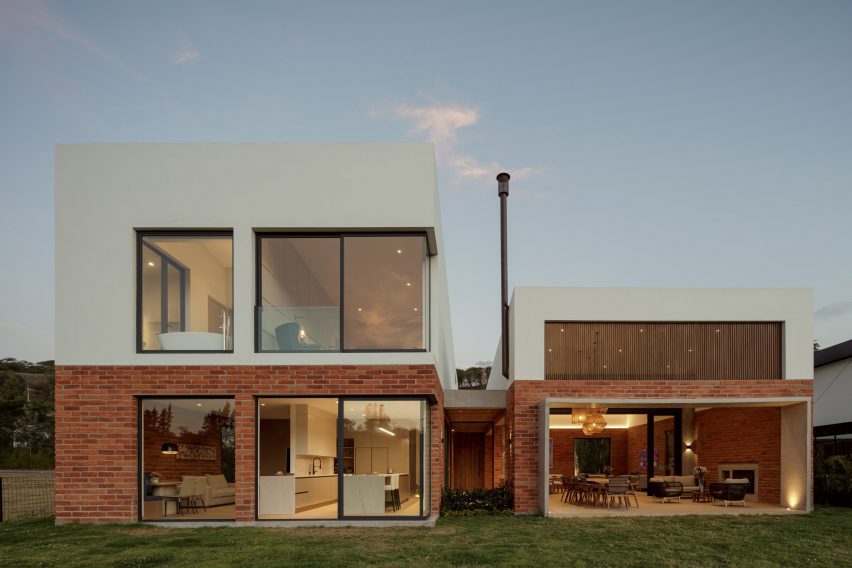
Down the slope from the house, accessed by a brick staircase, sits a small concrete block that serves as a home office.
"[The office is] a concealed gem that fosters a professional ambience distinct from that of the home environment, without obstructing or disrupting the visual harmony of the house," said Godoy-Dinneen.
Other Quito homes that have reactivated vernacular Ecuadorian brick into contemporary designs include the Slope House by El Sindicato Arquitectura that steps down a hillside with a glazed breezeway and a "non-pretentious" tiny house with two blocky forms by PJCArchitecture.
The photography is by Lorena Darquea.
Project credits:
Architecture: PJCArchitecture in collaboration with Juan Pablo Ribadeneira Mora Arquitecto
Team members: Nandar Godoy-Dinneen, Philip J. Consalvo, Juan Pablo Ribadeneira Mora
Contractor: CVD Arquitectura
Interior Designer: Magenta Arquitectura Interior